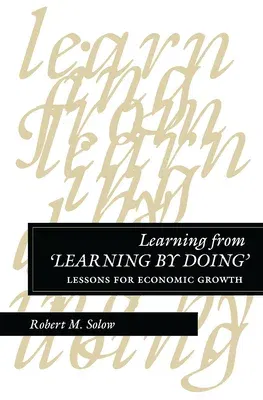Robert M Solow
(Author)Learning from 'Learning by Doing': Lessons for Economic GrowthPaperback, 1 April 1997

Qty
1
Turbo
Ships in 2 - 3 days
In Stock
Free Delivery
Cash on Delivery
15 Days
Free Returns
Secure Checkout

Part of Series
Kenneth J Arrow Lectures
Part of Series
Kenneth J. Arrow Lectures
Print Length
104 pages
Language
English
Publisher
Stanford University Press
Date Published
1 Apr 1997
ISBN-10
0804728410
ISBN-13
9780804728416
Description
Product Details
Author:
Book Format:
Paperback
Country of Origin:
US
Date Published:
1 April 1997
Dimensions:
21.67 x
14.05 x
0.89 cm
ISBN-10:
0804728410
ISBN-13:
9780804728416
Language:
English
Pages:
104
Publisher:
Weight:
90.72 gm